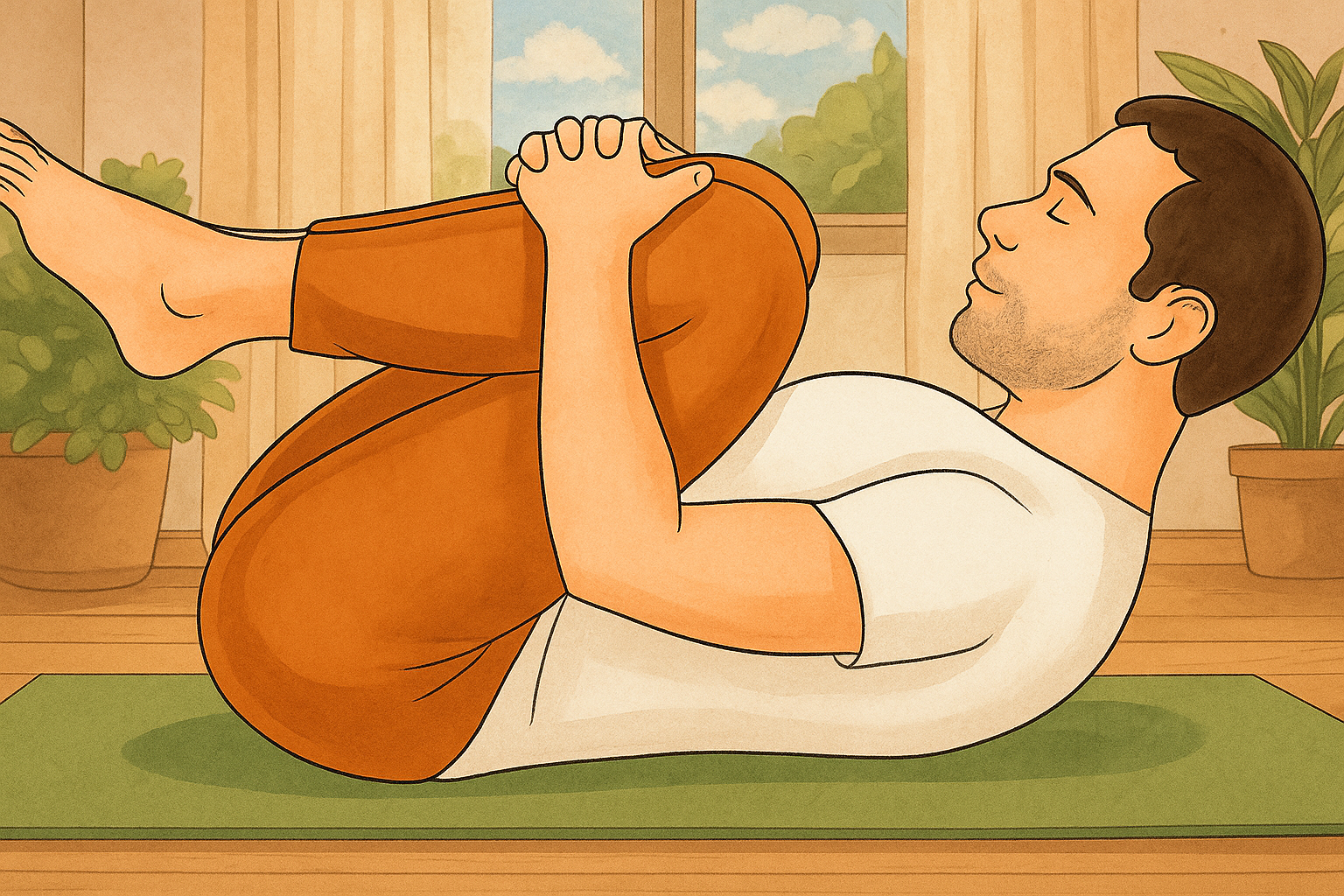Pawanmuktasana (Wind-Relieving Pose) – Steps, Benefits, and Precaution
Yoga is an ancient practice that helps to keep the body healthy and the mind peaceful. Each yoga posture, or asana, is designed to improve certain physical and mental functions. One simple yet highly effective asana is Pawanmuktasana, also known as the Wind-Relieving Pose.
The word Pawana in Sanskrit means “wind” or “air,” and mukta means “released” or “freed.” As the name suggests, this pose helps release excess gas from the stomach and intestines, promoting better digestion and comfort.
Table of Contents
Meaning and Importance
In daily life, poor eating habits, stress, or irregular routines can cause gas, bloating, and heaviness in the stomach. Pawanmuktasana is a natural remedy for such problems. It gently massages the abdominal organs, improves digestion, and relieves discomfort. Apart from its digestive benefits, this pose also strengthens the lower back and stretches the spine, making it more flexible.
Steps to Practice Pawanmuktasana
It is a simple posture, but it should still be done with the right technique for maximum benefit. Here’s how to perform it:
- Starting Position
Lie down on your back on a yoga mat. Keep your legs straight and arms by your sides. Relax your whole body. - Lifting the Legs
While inhaling, slowly lift both legs off the floor. - Bending the Knees
Bend your knees and bring them towards your chest. - Holding the Knees
Wrap both arms around your knees, clasping your hands or wrists. Press your thighs gently towards your stomach. - Lifting the Head
Raise your head and bring your chin close to, or touching, your knees. This creates a gentle pressure on your abdomen. - Holding the Position
Stay in this position for a few seconds while breathing normally. - Returning to Starting Position
Slowly lower your head, release your arms, and straighten your legs back to the floor.
Dos and Don’ts
Following correct technique is important for safety and effectiveness.
Do’s
- Press your knees gently but firmly towards your chest.
- Keep your toes relaxed during the pose.
- Breathe normally while holding the posture.
Don’ts
- Do not lift your body beyond the mid-torso level.
- Avoid this asana if you have Cervical Spondylitis or serious neck problems.
- Do not hold your breath for too long.
- Avoid jerky movements when lifting or lowering your legs.
Benefits of Pawanmuktasana
This asana offers multiple benefits for both the digestive system and overall health:
- Releases Gas and Improves Digestion
The main benefit is releasing excess gas from the stomach and intestines, which relieves bloating and discomfort. - Relieves Constipation
The gentle pressure on the abdomen stimulates the digestive organs, helping relieve constipation. - Reduces Heaviness in the Stomach
By improving digestion, it helps reduce the feeling of heaviness after meals. - Reduces Abdominal Fat
Regular practice helps burn excess fat in the abdominal area, aiding in weight management. - Improves Blood Circulation
The posture enhances blood flow to the abdominal area and other parts of the body. - Increases Spine Flexibility
The stretching and curling of the spine in this pose help keep it flexible and healthy.
Precautions
Even though Pawanmuktasana is gentle and beginner-friendly, some precautions should be followed:
- Avoid this pose if you have serious neck or spinal issues.
- Pregnant women should not practice this asana.
- People with hernia, severe back pain, or recent abdominal surgery should consult a doctor before trying it.
- Always practice on an empty stomach or at least 3–4 hours after eating.
Tips for Beginners
- If lifting both legs together feels difficult, start with one leg at a time (this is called Ardha Pawanmuktasana).
- Keep your movements slow and controlled.
- Use a folded blanket under your head if you feel strain in your neck.
- Focus on steady breathing to enhance relaxation during the pose.
Conclusion
Pawanmuktasana is a simple yet powerful yoga posture that works like a natural remedy for gas, bloating, and constipation. It also tones the abdominal muscles, reduces belly fat, and improves blood circulation. With regular practice, it not only strengthens the digestive system but also keeps the spine flexible and the body energized.
When practiced daily with proper technique and care, Pawanmuktasana can be a great addition to your routine for better digestion, improved flexibility, and overall well-being.
Subscribe to us on YouTube and try our quizzes on this website to keep your exam preparation on track.




